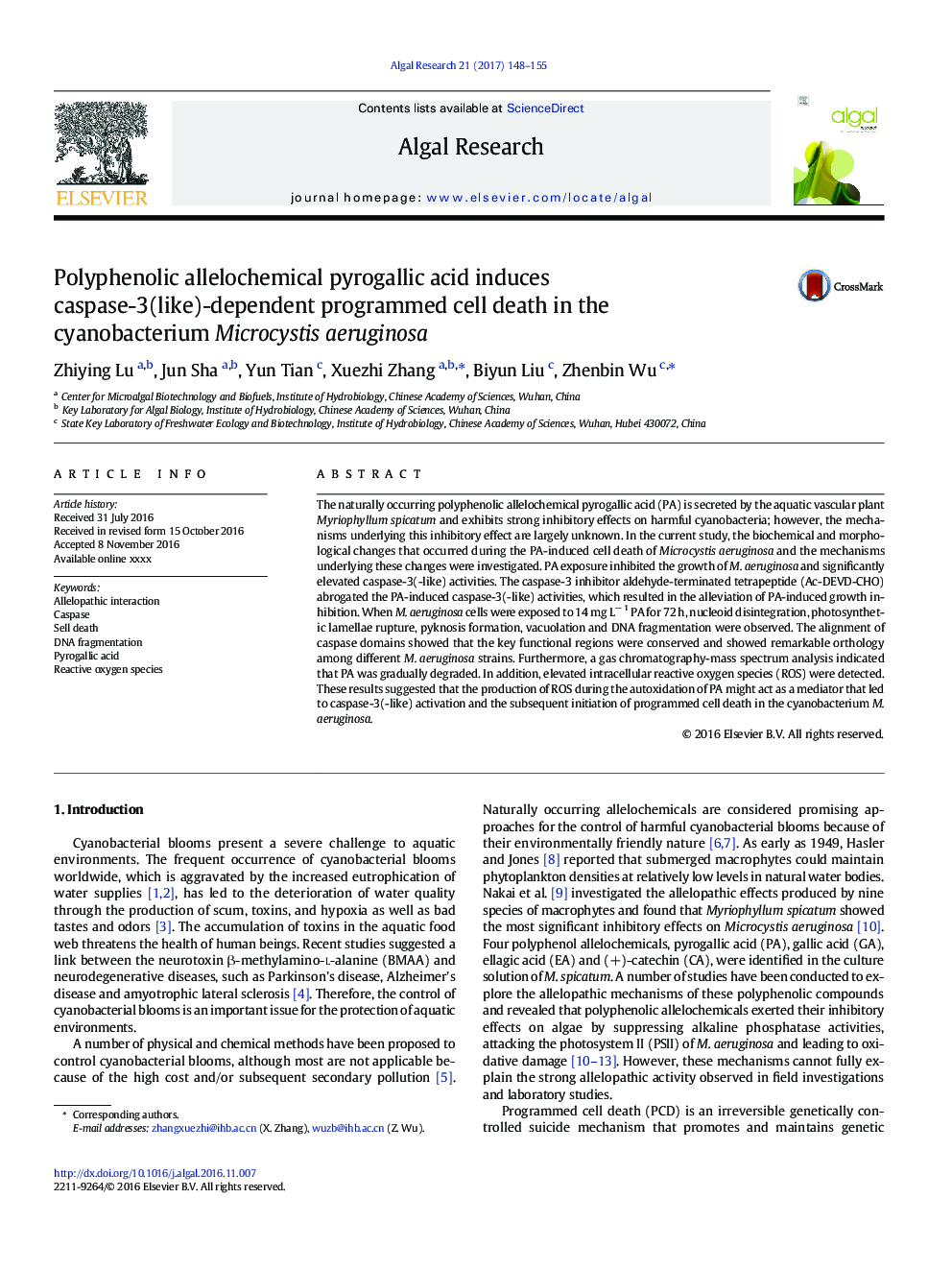| Article ID | Journal | Published Year | Pages | File Type |
|---|---|---|---|---|
| 5478488 | Algal Research | 2017 | 8 Pages |
Abstract
The naturally occurring polyphenolic allelochemical pyrogallic acid (PA) is secreted by the aquatic vascular plant Myriophyllum spicatum and exhibits strong inhibitory effects on harmful cyanobacteria; however, the mechanisms underlying this inhibitory effect are largely unknown. In the current study, the biochemical and morphological changes that occurred during the PA-induced cell death of Microcystis aeruginosa and the mechanisms underlying these changes were investigated. PA exposure inhibited the growth of M. aeruginosa and significantly elevated caspase-3(-like) activities. The caspase-3 inhibitor aldehyde-terminated tetrapeptide (Ac-DEVD-CHO) abrogated the PA-induced caspase-3(-like) activities, which resulted in the alleviation of PA-induced growth inhibition. When M. aeruginosa cells were exposed to 14 mg Lâ 1 PA for 72 h, nucleoid disintegration, photosynthetic lamellae rupture, pyknosis formation, vacuolation and DNA fragmentation were observed. The alignment of caspase domains showed that the key functional regions were conserved and showed remarkable orthology among different M. aeruginosa strains. Furthermore, a gas chromatography-mass spectrum analysis indicated that PA was gradually degraded. In addition, elevated intracellular reactive oxygen species (ROS) were detected. These results suggested that the production of ROS during the autoxidation of PA might act as a mediator that led to caspase-3(-like) activation and the subsequent initiation of programmed cell death in the cyanobacterium M. aeruginosa.
Related Topics
Physical Sciences and Engineering
Energy
Renewable Energy, Sustainability and the Environment
Authors
Zhiying Lu, Jun Sha, Yun Tian, Xuezhi Zhang, Biyun Liu, Zhenbin Wu,
